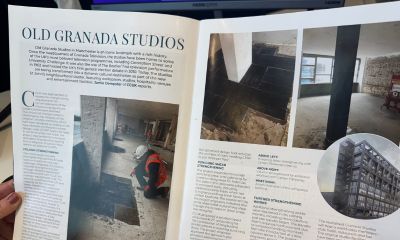Guidance has been issued to NHS England to help hospitals take action and address structural issues following the collapse of a flat roof at an Essex school.
According to the BBC, the Standing Committee on Structural Safety (SCOSS) put the failure of the roof down to the use of concrete planks, which was common in construction between the 1960s and 1980s.
In all, seven hospitals were affected by the SCOSS alert, with schools, local authorities and government departments also made aware of the guidance.
The reinforced autoclaved aerated concrete planks that had been used were made from a material lot weaker than concrete and as such, there is a risk associated with the use – although the extent is uncertain.
One of the affected sites, West Suffolk Hospital, was built in 1973 and, according to a 2018 board report, has had ongoing structural concerns, including rust, cracks and corrosion.
Dr Stephen Dunn, chief executive of the hospital, said: “The hospital is as safe as it can be but we will take continuous action to ensure we minimise the risk. Patient safety, staff safety is paramount.”
And Queen Elizabeth Hospital said it was now working on accelerating the case for either upgrading or replacing the roof. According to NHS England, building maintenance and safety falls to the individual Trusts to sort out.
Earlier this year, the Guardian reported that NHS bosses believe patient safety is being put at risk because of crumbling and overcrowded buildings, as well as floods and fires – as a result of a lack of funding.
Hospitals are now saying that they are unable to fix leaking roofs and boilers, outdated scanners and so on. Some 82 per cent of chief finance officers and chief executives at NHS trusts throughout England are worried that the lack of capital funding poses either medium or high risk.
One hospital, St Mary’s in London, has been affected by drainage problems, electrical issues and floods since 2017. A ceiling in an elderly care ward also collapsed and maternity services had to be relocated because of a lift fault. It has also been unable to use the beds in the Grafton ward since 2018 because the floor isn’t strong enough to support them.
Imperial College Healthcare NHS Trust, which is in charge of St Mary’s and four other sites, has a maintenance backlog that would take £1.3 billion to clear.
All buildings, whether public or private, will need to be repaired or strengthened at some point in their lives. This can be for a range of reasons, anything from chnage of use, increase in loading demand, structural deterioration because of corrosion, compliance with new design codes… it goes on. If you’re looking for structural repair contractors at the moment, get in touch with us today to see how we can help.





